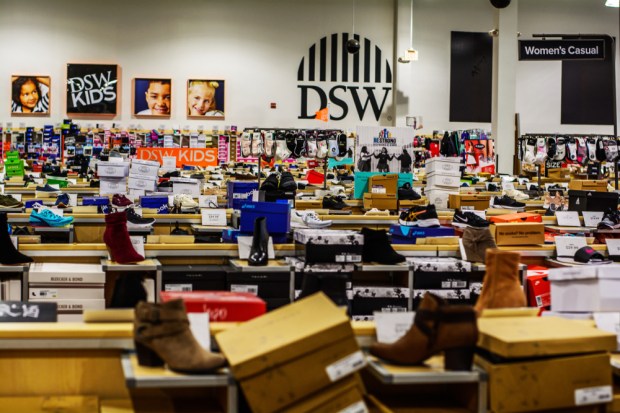Designer Brands Says Customers Find Value in the Clearance Aisle

The current state of the consumer, a concern that has been regularly reflected during the past quarter at PYMNTS, is very real for DSW’s parent company Designer Brands. Consumers are looking for the best value, and more often than not it can be found in the clearance aisle. But unfortunately, it wasn’t enough to create the demand it was looking for.
The CEO, Doug Howe, mentioned that this quarter the company was affected by a shrinking footwear market for the first time since COVID, along with unusually warm weather reducing people’s interest in buying shoes, especially seasonal ones. Although the company saw better performance in casual and clearance items, it wasn’t enough to make up for the overall drop in demand.
Despite these challenges, Howe said in a press release: “While macro pressures notably impacted our business, we clearly recognize the need to operate with even greater speed and increase the level of innovation, newness, and fashion into our assortments, returning to our roots as a merchant organization and a fashion footwear retailer.”
On a positive note, during the company’s earnings call on Tuesday (Dec. 5), Howe attributed Designer Brands’ year-over-year (YoY) profitability improvement to consolidating fulfillment centers and cutting logistics costs, including shipping and distribution. The consolidation, specifically merging the Columbus, Ohio, center into the New Jersey ECLC, helped the company achieve better cost leverage.
However, increased promotions to rebuild the clearance business and leveraging fixed store occupancy costs counteracted some of these gains. Although the company is dealing with modest leverage due to retail costs, Howe pointed out that there has been sequential improvement in both dollars and margins compared to the first quarter. Looking ahead, Designer Brands aims to boost marketing investment to strengthen brand equity and maintain customer awareness.
To do that, Howe noted that the company has looked to bring more compelling product offerings and has forged partnerships with brands such as Hush Puppies. In fact, during the call with analysts, Howe revealed that Designer Brands recently entered into an agreement to become the exclusive licensee of the Hush Puppies brand in the United States and Canada.
Current State of Consumer
According to a recent report by PYMNTS, consumers have been spending despite economic uncertainties, aiming to complete a portion of their holiday shopping and capitalize on attractive deals.
The online sales for this year’s Black Friday in the United States came close to hitting a record, reaching almost $10 billion, marking a 7.5% increase from the previous year. Projections for Cyber Monday spending were even higher, expected to reach $12 billion, reflecting a 9.7% increase compared to 2022. The period spanning Thanksgiving Day to Cyber Monday witnessed the highest-ever participation in the seasonal campaign, with 200 million shoppers, surpassing the previous year’s record of 197 million.
In light of this, American consumers have witnessed a 7% reduction in their savings since 2021, as reported by PYMNTS Intelligence. When this is coupled with cumulative inflation, the shopping landscape becomes evident. Consumers found themselves compelled to maximize deals and resort to credit for their purchases.
Read more: Consumers Take Advantage of Deals, BNPL as Holiday Shopping Kicks Off
Designer Brands by the Numbers
In the third quarter of 2023, Designer Brands reported a 9.1% decline in net sales, to $786.3 million. Total comparable sales experienced a corresponding decrease of 9.3%. The gross profit for the quarter was $256.4 million, a YoY decline from the $285.8 million. Gross margin also fell YoY, at 32.6% compared to 33.0%.
Net income attributable to Designer Brands in the reported quarter was $10.1 million, reflecting diluted earnings per share (EPS) of $0.17. This figure includes net after-tax charges of $0.07 per diluted share from adjusted items, primarily associated with restructuring, integration, CEO transition costs, and a valuation allowance change on deferred tax assets.
On an adjusted basis, the net income for the quarter stood at $14.8 million, with adjusted diluted EPS reaching $0.24.

